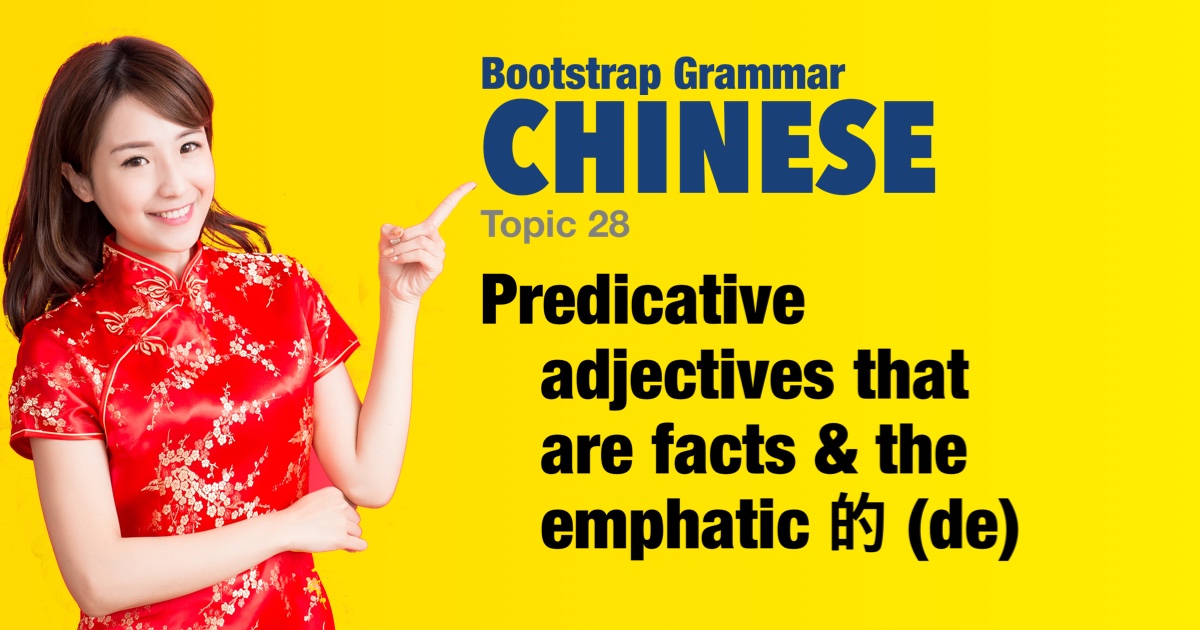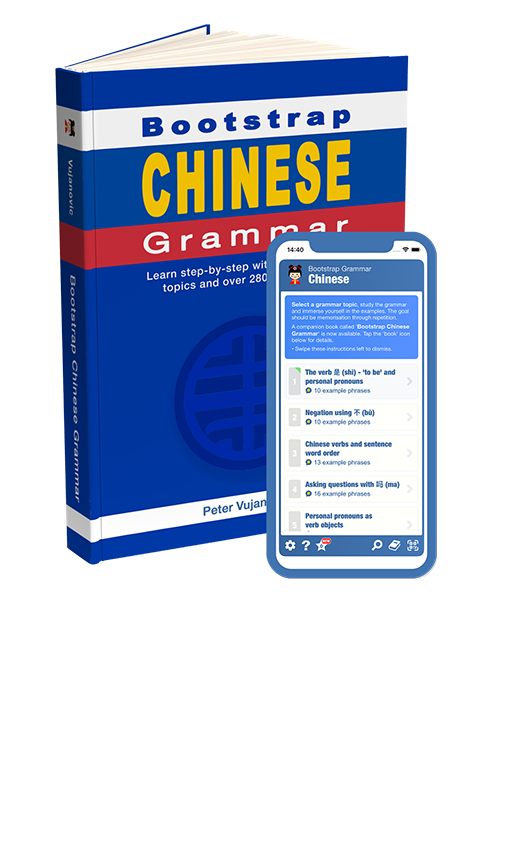Chinese grammar - Predicative adjectives that are facts & the emphatic 的 (de) |
|||
|
|||
When a statement uses a predicative adjective to state a 'fact' or 'perceived fact', then 是 (shì) is used rather than 很 (hěn) to connect the noun and adjective. This could be the case when talking about color, gender or other facts. The pattern is : [subject] + 是 + [adjective] + 的. Notice that the pattern concludes with 的. This is an emphatic 'modal particle' to indicate certainty - that is the speaker is sure of what he or she is saying. |
| Examples: | |
|
苹果是红色的。
píngguǒ shì hóngsè de. The apple is red.
|
|
|
猫是白色的。
māo shì báisè de. The cat is white.
|
|
|
他是男的。
tā shì nán de. He is male.
|
|
|
她是女的。
tā shì nǚ de. She is female.
|
|
|
车是新的。
chē shì xīn de. The car is new.
|
|
|
手机是旧的。
shǒujī shì jiù de. The phone is old.
|
|
|
狗是老的。
gǒu shì lǎo de. The dog is old. |
|
|
房子是老的。
fángzi shì lǎo de. The house is old.
|
|
|
包是黑色的。
bāo shì hēisè de. The bag is black.
|
|
|
书包是蓝色的。
shūbāo shì lánsè de. The backpack is blue.
|
|
|
花是红色的。
huā shì hóngsè de. The flowers are red.
|
|
|
灯是亮的。
dēng shì liàng de. The light/lamp is bright.
|
|
|
桌子是木头的。
zhuōzi shì mùtou de. The table is wooden.
|
|
 |
|



 Note that it is common to use
Note that it is common to use 